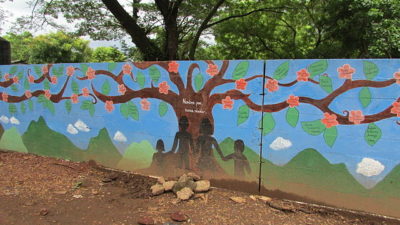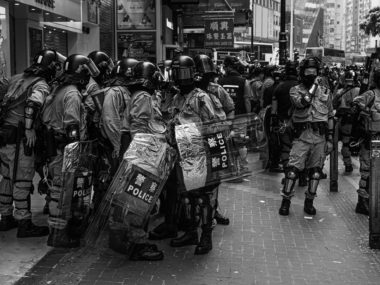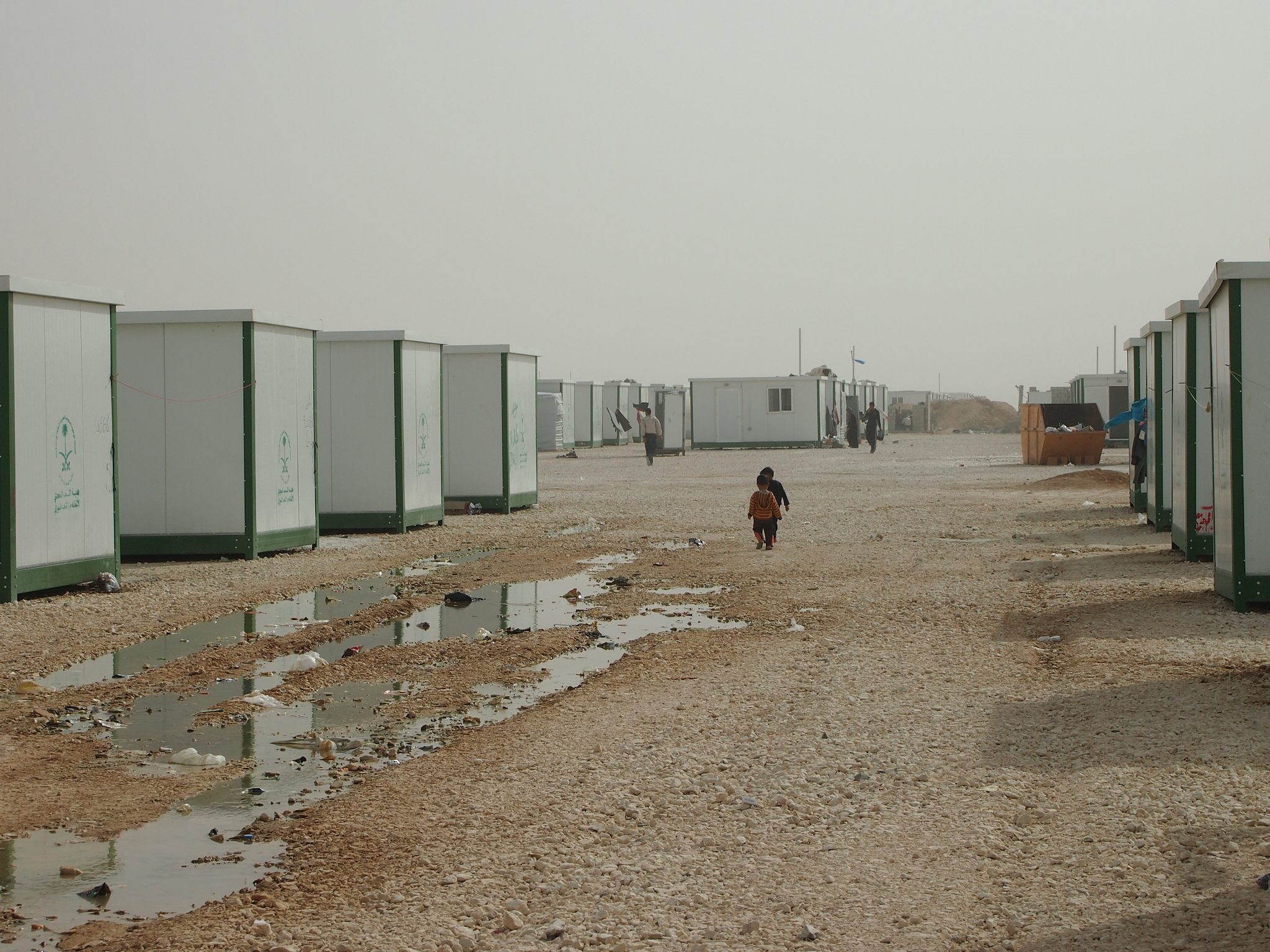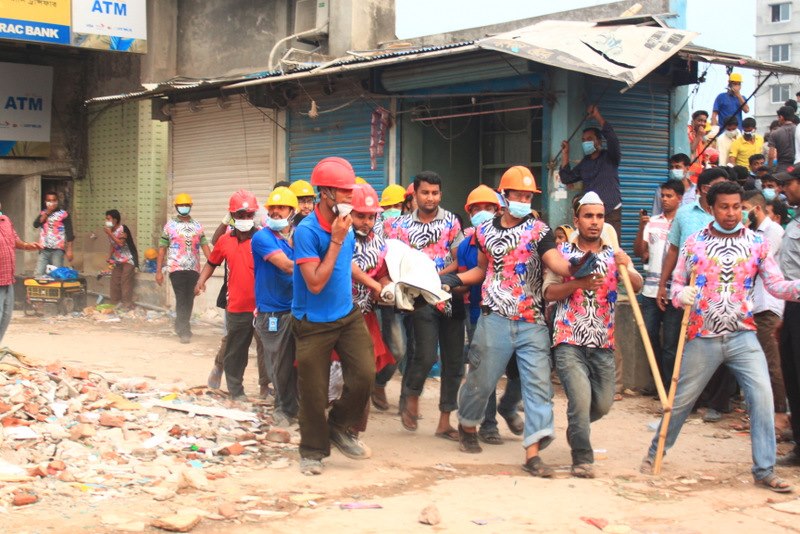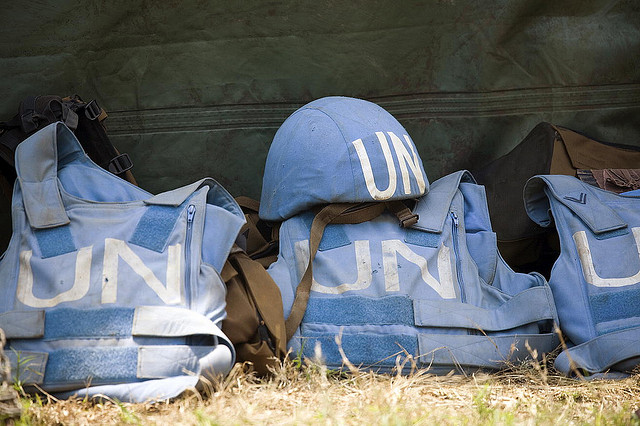Guest Post by Viveca Pavon and Michael Weintraub
In June 2017, we had the opportunity to visit a bartolina (pre-trial detention center) on the outskirts of San Salvador. As scholars of crime and armed conflict, we have become accustomed to psychologically difficult encounters with violence. Nevertheless, what we saw shocked us. And with good reason: in 2016, the Supreme Court of Justice of El Salvador stated that the country’s prison conditions violate fundamental rights to personal integrity, given that on average 30 to 40 inmates reside within less than 10.2 square meters, or 0.28 square meters per detainee. Indeed, overcrowding was the first and most visible form of suffering that we could note, but certainly not the only one.
The State of the Facility
The bartolina we visited was in a residential area, the compound nothing more than a house with a large metal garage door and a single police officer guarding the entryway. The metal garage door was covered with sheets of paper detailing scheduled food deliveries from family members, an outline of when goods could be provided to inmates.
When we entered the detention area, we noticed two sections: one to our right, blocked off with black tarp, and another to our left, consisting of administrative offices and holding cells for female detainees. At the end of the row of the cells for women was a large cage, with three of four walls made of steel bars. There were twenty-one men inside, sitting on the ground, many with cardboard boxes beneath them. Most kept busy making hammocks, all seemingly in relatively good health, given their access to running water and a shared toilet. Most stood accused of misdemeanor crimes such as having made threats against others.
To the right, behind a black tarp, were 5 rooms holding detainees belonging to the two largest gangs in El Salvador: Barrio 18 and MS-13. These detainees were grouped in cells according to gang affiliation, to avoid violence between them. Tattoos on their bare chests identified their affiliation.
The cells consisted of brick walls, a tin roof, windows chiseled through the walls and subsequently sealed with thick metal bars, and a padlock. Fans were hastily connected to the windows of the cells to increase ventilation. When asked how they were doing, the detainees responded respectfully, especially underscoring their thirst and hunger. We noticed gallons of water labeled with detainee names upon our entry, brought by their families. Because this facility was not designed for long-term detention there are no funds to buy food, yet a sense of cooperation reigns within the cells: if one inmate receives food, supplies are distributed equally. Water provided by families is not only used for drinking, but also for bathing.
Deep and Proximate Causes of the Prison Crisis
Given our academic training in political science, we frequently seek to identify effects of a single cause on an outcome of interest. Viewing the prisoners at this makeshift pre-trial detention center, it was difficult to identify who or what was responsible for the crisis. Here we attempt to catalog interlocking causes.
One could point to hardline security policies imposing harsh penalties for suspected gang involvement, overburdening the corrections system. This has cascade effects: traditional prisons can no longer handle those convicted of crimes, forcing pre-trial detention facilities to hold three classes of individuals: those yet to be charged with a crime, those yet to be convicted of a crime, and those found to be guilty. The result is pandemonium and a quick course in crime for those erroneously caught up in police sweeps.
The swelling prison population means that corrections officials are overwhelmed, making police the de facto caretakers for prisoners in these facilities, a job they are not trained to confront nor one that they should be asked to. Their facilities are also inadequate to address the needs of long-term stays: these sites lack waste disposal systems, for example, meaning that prisoners must inhabit suffocating and unsanitary spaces. At the location we visited, the 50 or so prisoners in a cell measuring no more than 7 feet by 7 feet shared a single toilet and, given the need to stack prisoners on hammocks, many defecate in plastic bags that are subsequently tossed from their cells. Police officials acknowledged the awful conditions – for prisoners and guards alike – but there are no good options, given space and resource constraints.
One could point to a justice system that provides disproportionate resources to prosecutors (Fiscalía General) versus public defendants (Procuraduría General) and seems designed to inhibit prompt resolution of cases due to public defenders’ overwhelming caseloads. Adding to this burden is the fact that detention facilities are located far from public defenders’ offices, complicating their visits. As outlined in Article 13 of the Constitution, after being held for 72 hours, detainees are entitled to an initial hearing, yet frequently the police lack resources to transport detainees to court. Additionally, families often lack clarity on what evidence might help ensure defendants’ conditional release, as opposed to preventive detention. This preventive detention means incredible delays and unnecessary jail time in the kinds of bartolinas described here. One of the prisoners with whom we spoke had been held for more than two years, without having been found guilty; had he been convicted, he would have been eligible for parole after only two years.
Potential Reforms
What is the way forward?
Any reform will almost certainly need to cope with the interlocking causes described above, including avoiding pre-trial detention; addressing problems of delays in the judicial system; increasing the capacity of authorities responsible for corrections, and thereby reducing the burden on the police in managing bartolinas; and establishing reinsertion and rehabilitation efforts not only for those in prisons, but also bartolinas.
This, of course, assumes that we know what works in preventing crime and improving justice sector processes, particularly in fragile countries. A number of efforts underway rigorously seek to monitor and evaluate interventions related to security and justice. Empowering government and civil society actors to develop and implement pilot policies that use advanced methods of impact evaluation is our preferred path. We don’t know what will demonstrate success. But absent public policy experimentation — accompanied by strong monitoring and evaluation plans — the horrific state of Salvadoran prisons is likely to persist. If things do not change, we are not only condemning detainees to such conditions, but also likely ensuring detainees’ recidivism once released. The best approach to ending cycles of violence is to develop a set of pilot interventions that, if successful, can be subsequently scaled up. The security and human rights challenges in Central America are profound. Experimentation and data-driven approaches to citizen security and justice have the potential to materially change the quality of life for the region’s most vulnerable.
Vivieca Pavon is a Ph.D. Candidate at the University of Texas-Dallas.
Michael Weintraub is an Associate Professor in the School of Government at the Universidad de los Andes, Bogota, Colombia.

